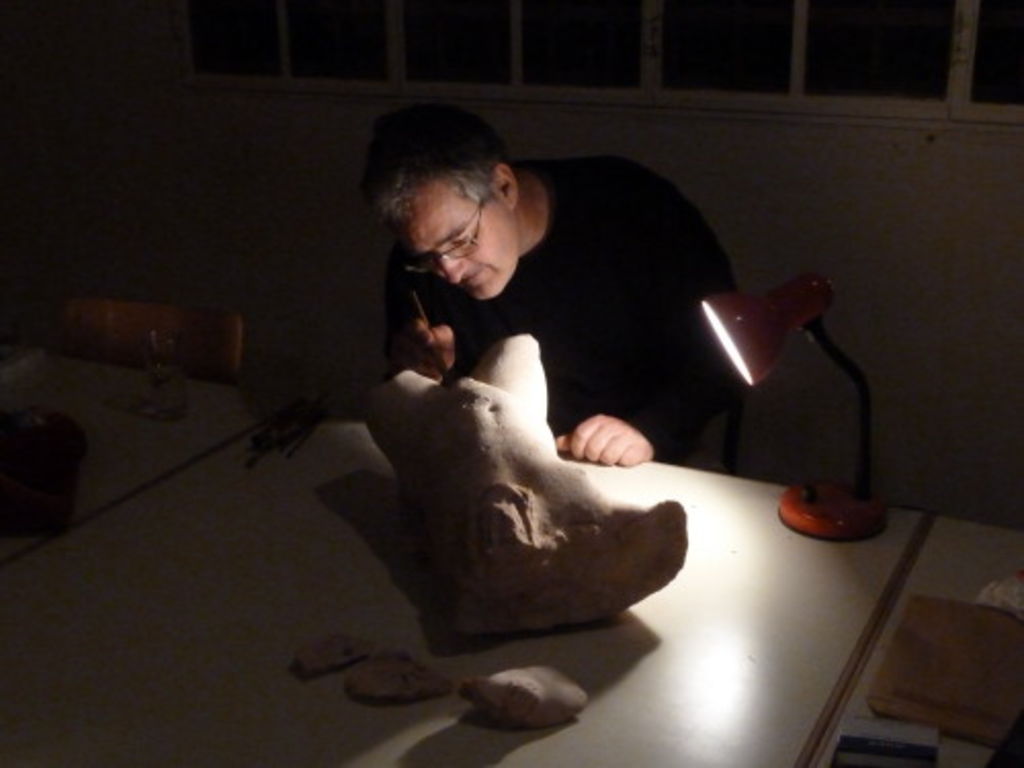Sunday, April 3, 2011
The third week of work started quite relaxed. On Umm el-Biyara the team was determined to finish all the trenches at the end of this week, in order to have enough time for drawing, inventoring and cleaning within the fourth week. As the working areas are positioned at different places on the Umm plateaus a gathering was arranged, where the responsible person explained the ongoing work to the other members of the team (kind of a „Schnittansparache“) We had the pleasure and the honour to welcome Piotr Bienkowski, the co-director of the Umm el-Biyara excavation. He joined the team, despite is full agenda, for one week to get updated about the ongoing work and help the team on the excavation site.
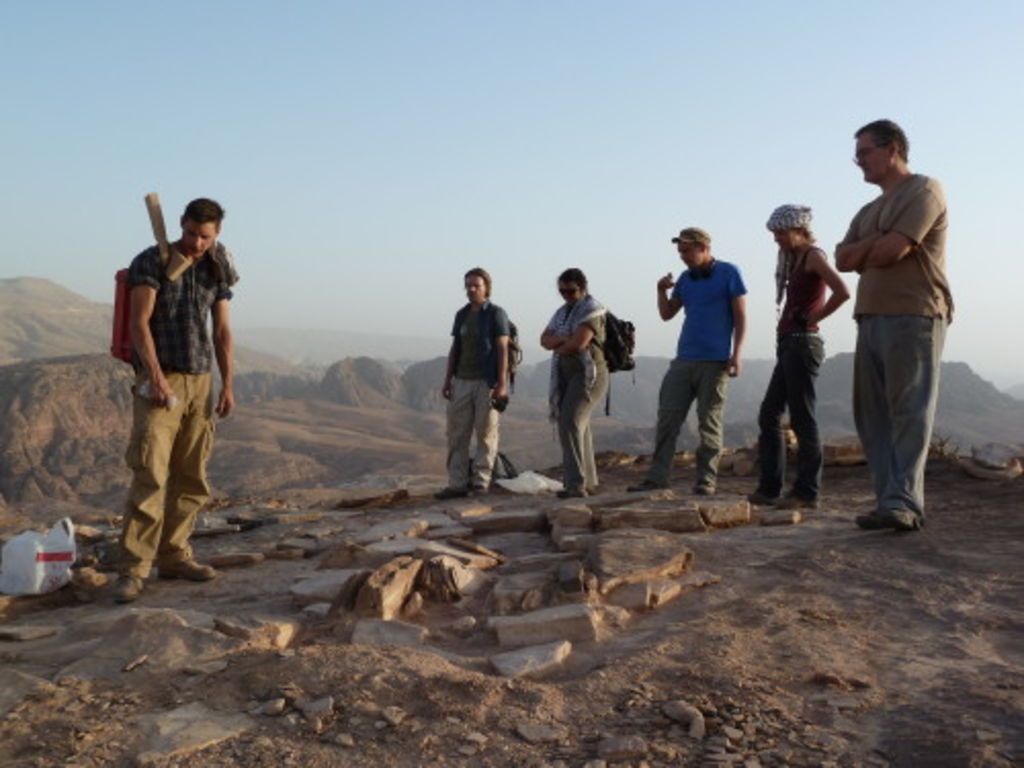
Also on Ez-Zantur the third week started with good spirits, as they too are trying to finish most of their excavation work in front of the big mansion wall until the end of the week. Up to now a large area has already been cleaned down to the bedrock.
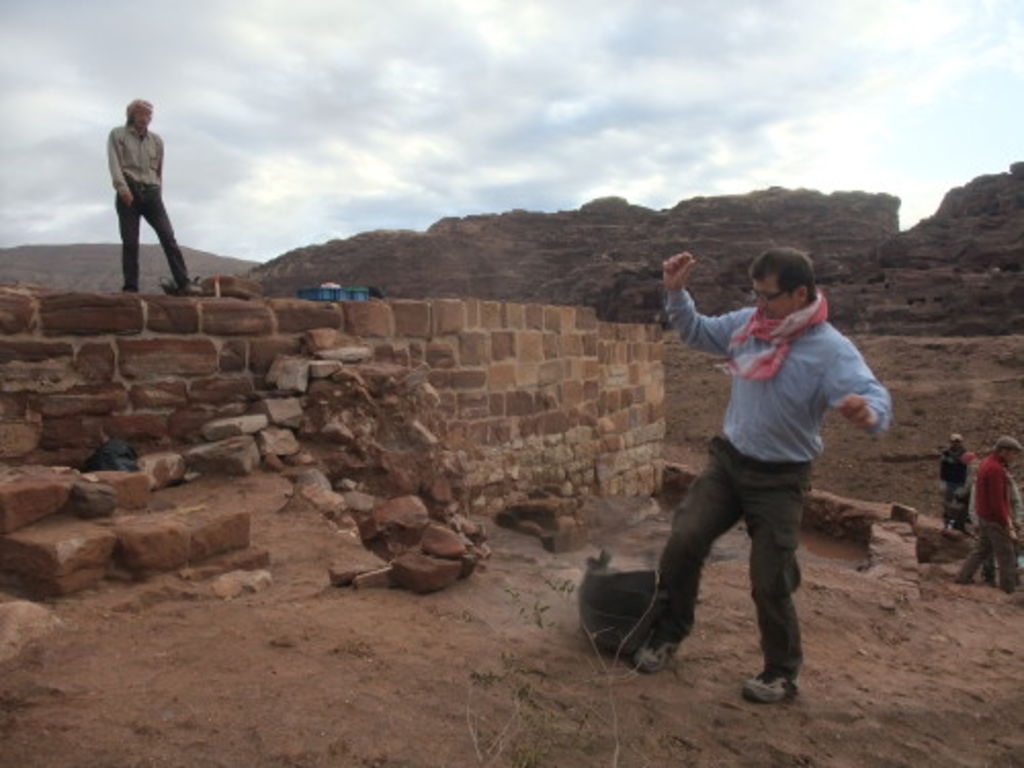
Monday, April 4, 2011
The night from Sunday to Monday brought a huge storm front into the area of Petra with heavy rainfalls, accompagnied by incredibly shiny flashes and bombardment-like thunder bursts. Almost everybody was awake and praying, that El-Habis is not falling onto the Nazzal’s camp. The next morning, a lot of water was running down the many side wadis and the Wadi Mousa itself.

On Umm el-Biyara, in addition to the rainfalls, a straight cold wind was affecting the work the whole day through. Everybody had to take out their winter clothes and winter caps and drink a lot of hot tea or coffee in order to remain warm until the evening. Nevertheless, the tent in the cave on Umm el-Biyara had always a nicer and warmer clima inside than the cold rooms in Nazzal’s camp.
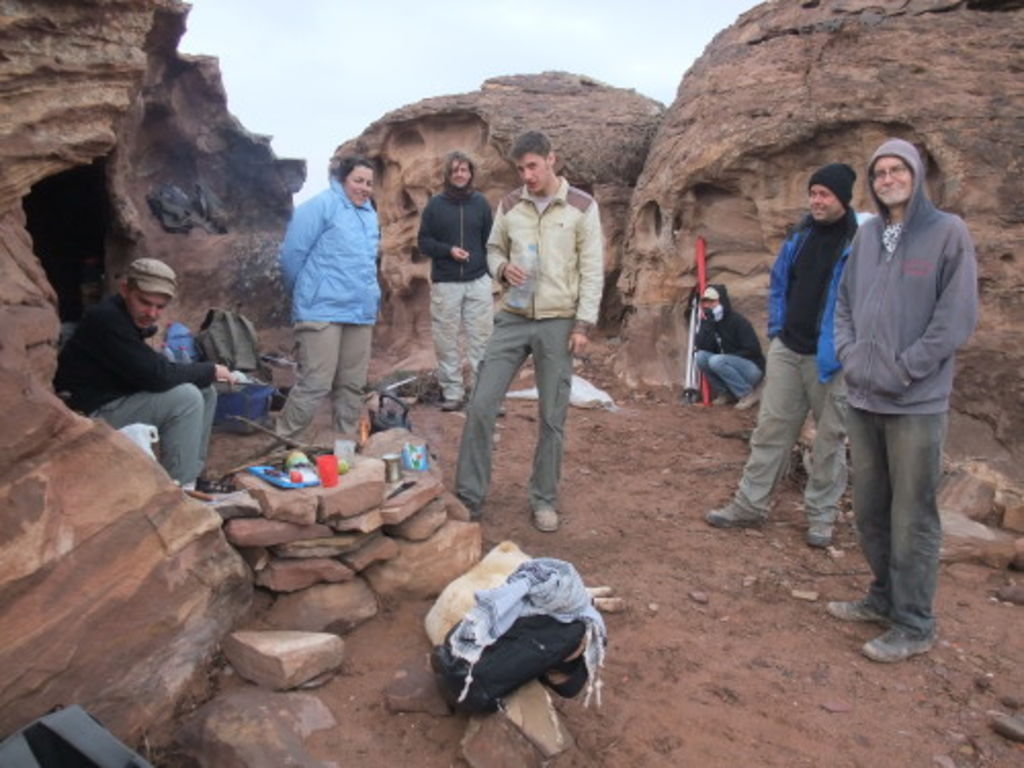
Tuesday, April 5, 2011
A big problem after heavy rainfalls is, not only in Petra but on every excavation in the world, that the trenches rapidly fill up with water. As on Umm el-Biyara there was no protective shelter available, the trench in the area of the baths rather looked like a swimming pool (with a cappuccino-like layer of goat shit floating on top of it) than a nicely cleaned floor with slabs. But with the aid of a earthly dam work could continue, although the water had to be poured out manually with a pet bottle anyway.
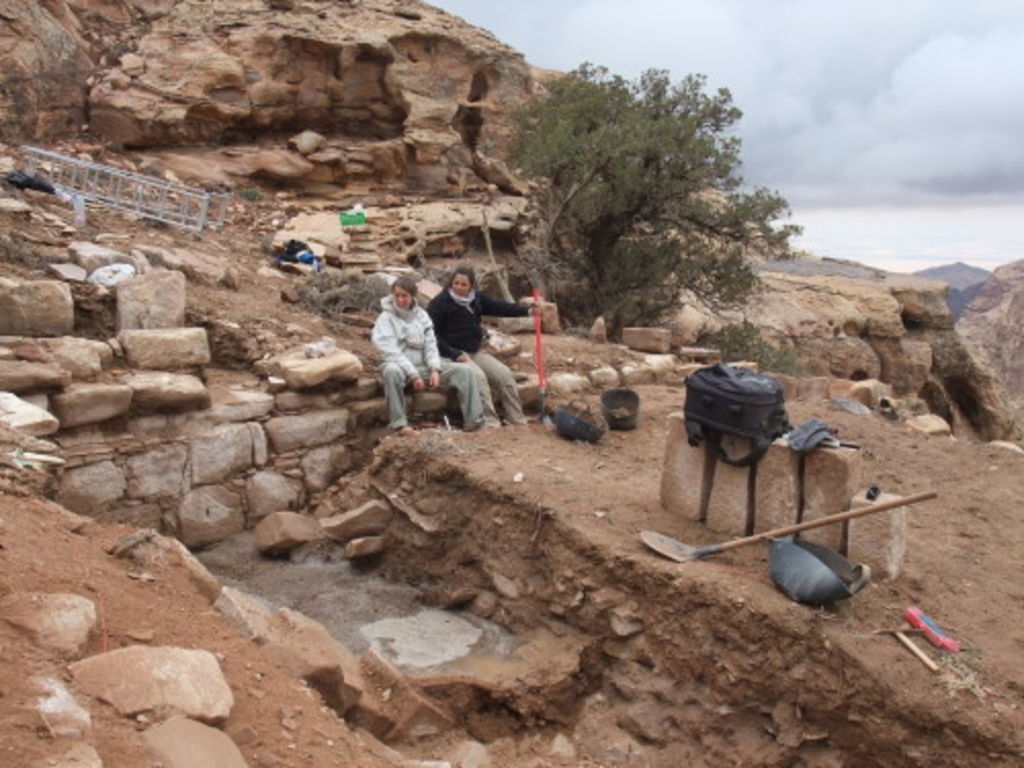
In the trenches that were least affected by the water work continued as usual. In Morten’s trench the team continued its cut above the floor and along one of the side walls of the courtyard, nicely layed out with large slabs and built right up to the edge of the plateau. Although a lot of stones and earth has been moved, it is not yet clear how this courtyard was accessed, as there are no doors visible until now in the side wall. So access must habe been granted though the western wall, which will be reached by team at the end of the week.

Wednesday, April 6, 2011
On Wednesday rain came back to Petra. The day started out very friendly with just a little bit cloudy sky, but the increasingly heavy winds coming from the West and the evolving of more and more dark clouds along the Wadi Araba announced the arrival of the next wave of bad weather. Therefore, work was interrupted and everybody rushed back to the cave to take shelter there. The sitting together with the darkened sky and the pouring rain outside suddenly evolved a charm of its own: everybody had time to sit back and relax, to think for a moment quietly about the past and things that are yet to come. Between these silent moments, songs about the working class and a medley of „Singing in the Rain“ were cheerfully sung.
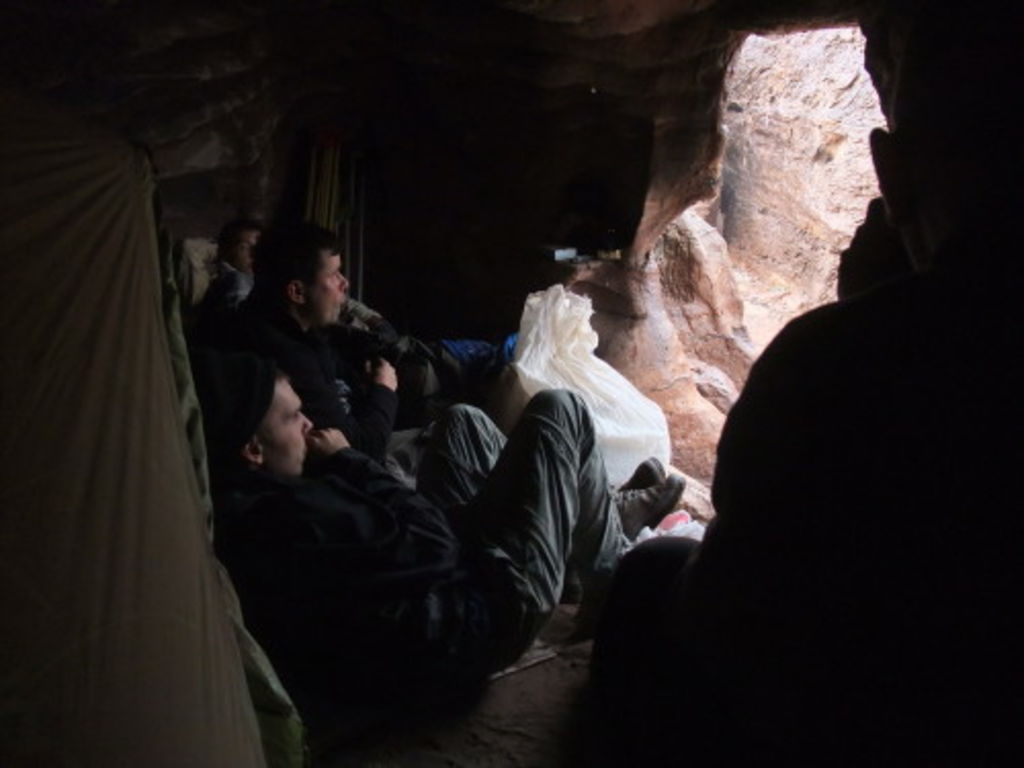
After about one hour the rain stoped and the team prepared itself for the descent, not an easy task with the wet bedrock and sand and stones that have flushed down the steps. Finally arrived at the foot of Umm el-Biyara, another surprise was waiting for the team: a heavily flooded wadi, which was only to be traversed by taking out shoes and socks and stumbling over the boulders in the wadi, avoiding blocks of wood and dead donkeys or goats floating down the wadi. Kind of like the old classic arcade game „Frogger“. Do you remember?
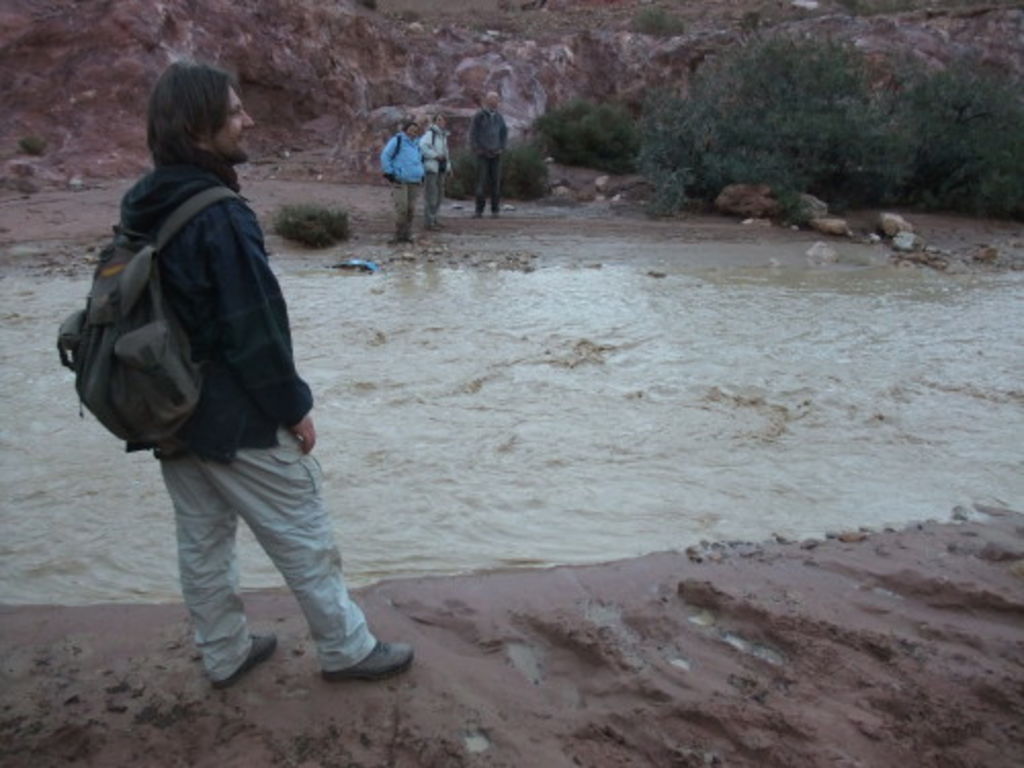
Thursday, April 7, 2011
On the last day of the third week almost all the work planned for this year’s campaign on Umm el-Biyara was already finished. Therefore, the last week can be used to finish all the drawings and information sheets and to clean up the site. And if there is need, some small soundings can be performed or membersof the team can give a hand on the other excavation sites starting from next week (International Khubta Tombs Project, International Aslah Triclinium Project, North-Eastern Petra Project).
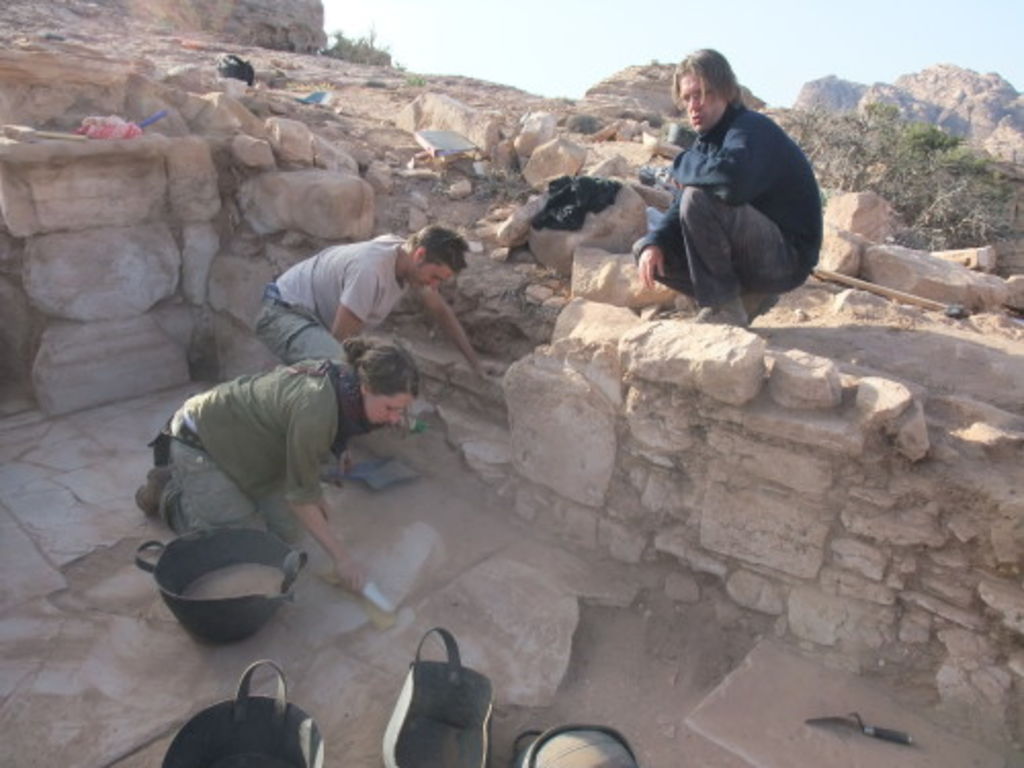
On Ez-Zantur came already to an end after three weeks, because Bernhard Kolb has to support the people from Antikenmuseum at Basel in gathering informations for the upcoming Petra excavation at Amman and Basel. Furthermore, he has to refine the concept and to plan the shipment of the material from Jordan to Switzerland. This all takes a lot of time, a lot more of patience and great endurance.
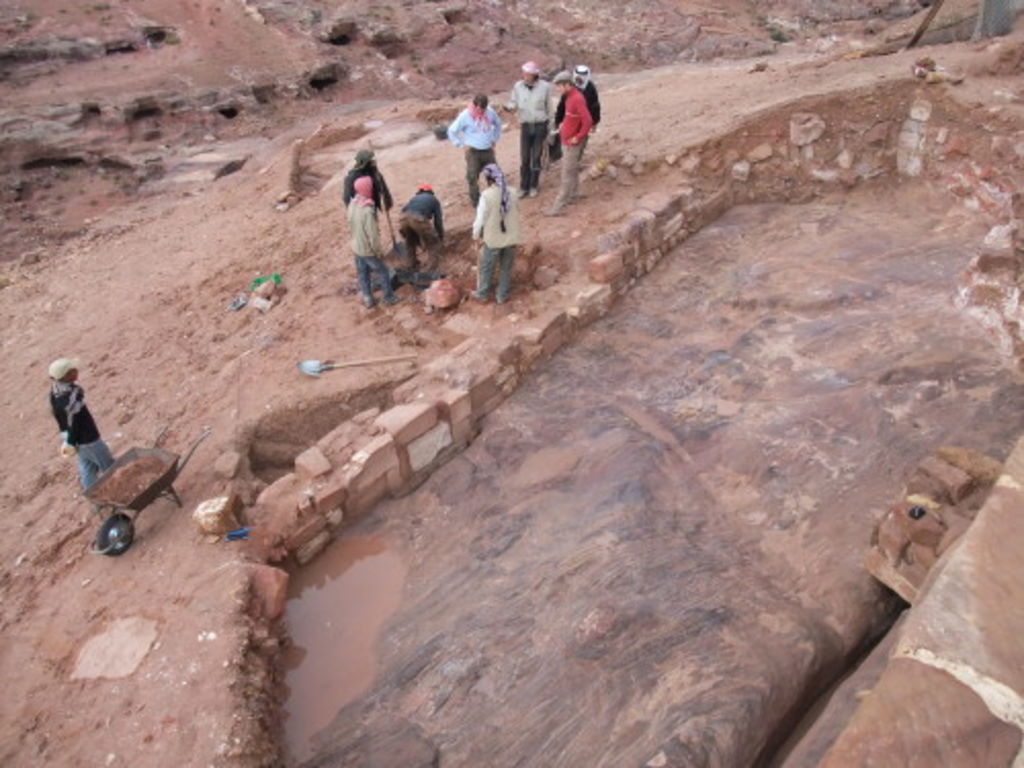
Friday, April 8, 2011
On the first day of the weekend there was some changement going on in the Nazzal’s camp. Christoph Schneider has left for Switzerland, Caroline Huguenot, her little daughter Bérénice, Sebastian Hoffmann and Karin Petrovsky have arrived from Berlin, Laurent Gorgerat and Aurélie Guet (International Aslah Triclinium Project) and Magnus Roth and Kurt Bosshard (Antikenmuseum Basel) have arrived from Amman. Robert Wenning and his wife Wiltrud are expected to arrive on Saturday at Petra. As the Nazzal’s camp is full up to the last bed, the latter are staying at the lovely house of Mohammed and Laila Dachlallah at Umm Sayhoun.
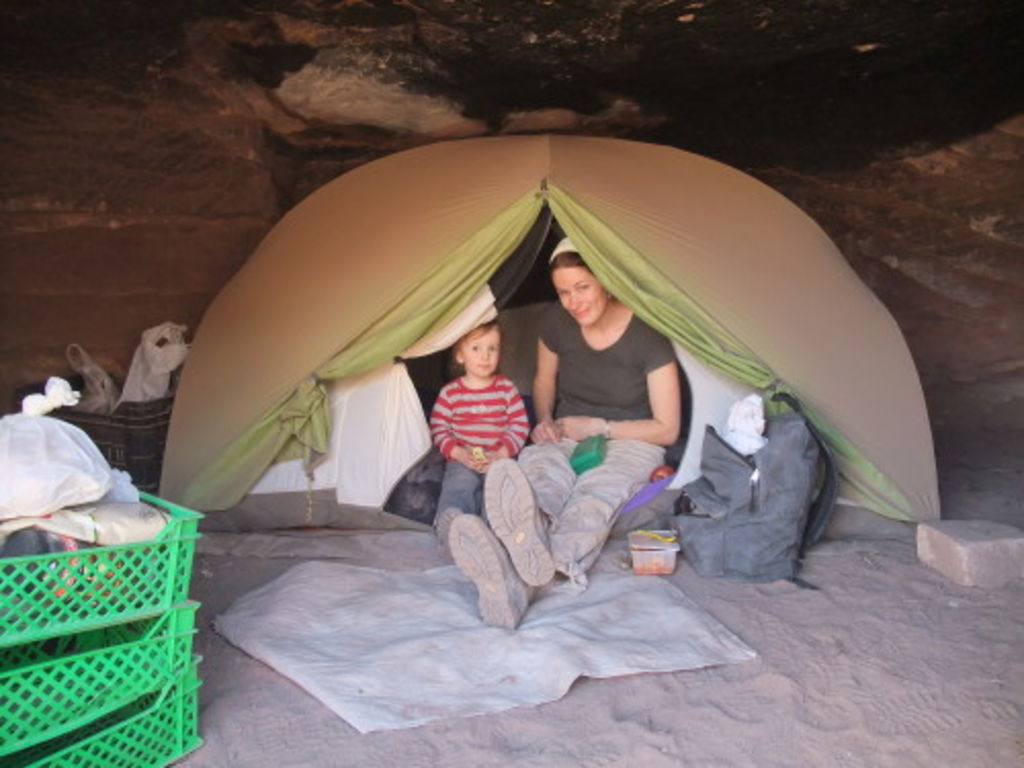
Saturday, April 9, 2011
On the second day of the weekend Laurent Gorgerat (head of the International Aslah Triclinium Project) and Lucy Wadeson (head of the International Khubta Tombs Project) were preparing the documentation and working material for their sites. Meanwhile, the excavation project on Ez-Zantur has been successfully finished and all finds have been inventorized. The members of the Umm el-Biyara team were cleaning the pottery and finishing the documentation to a point, where they could start the last excavation week with tranquility.
